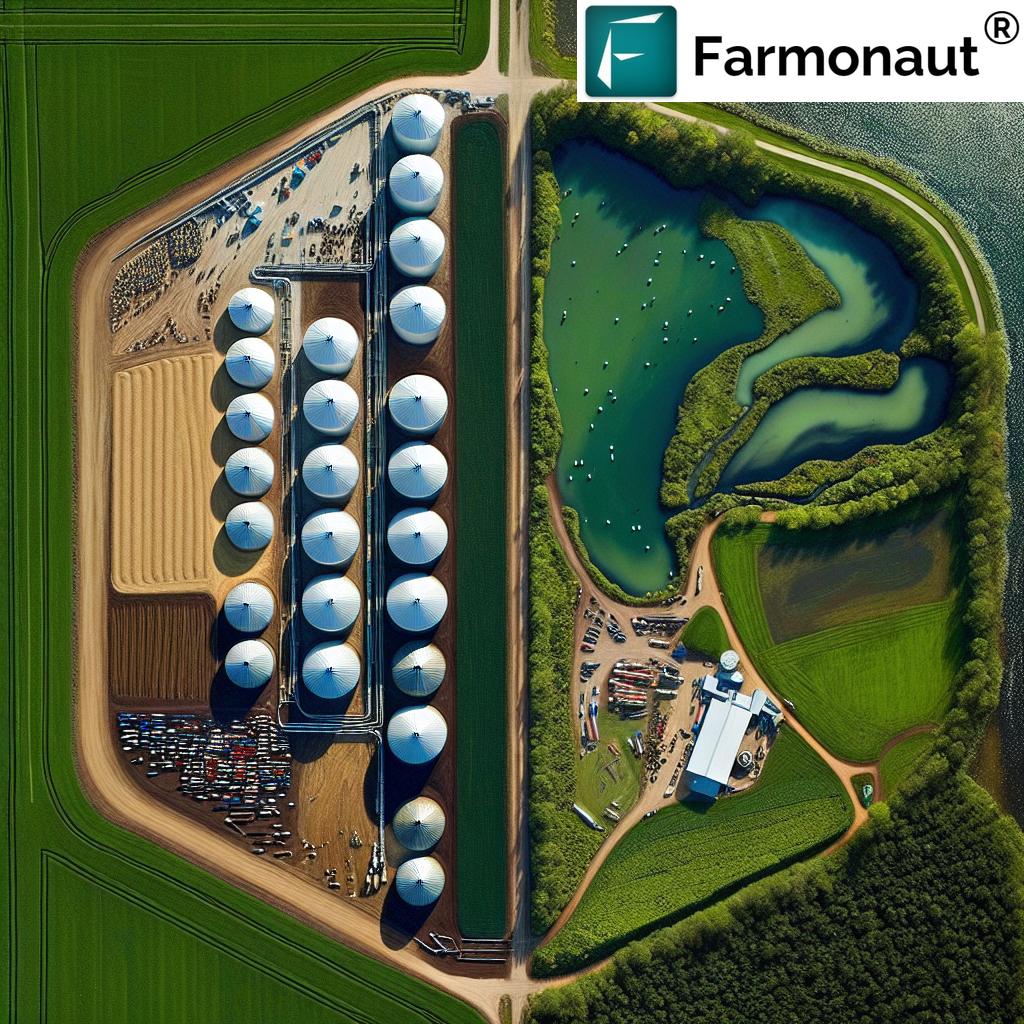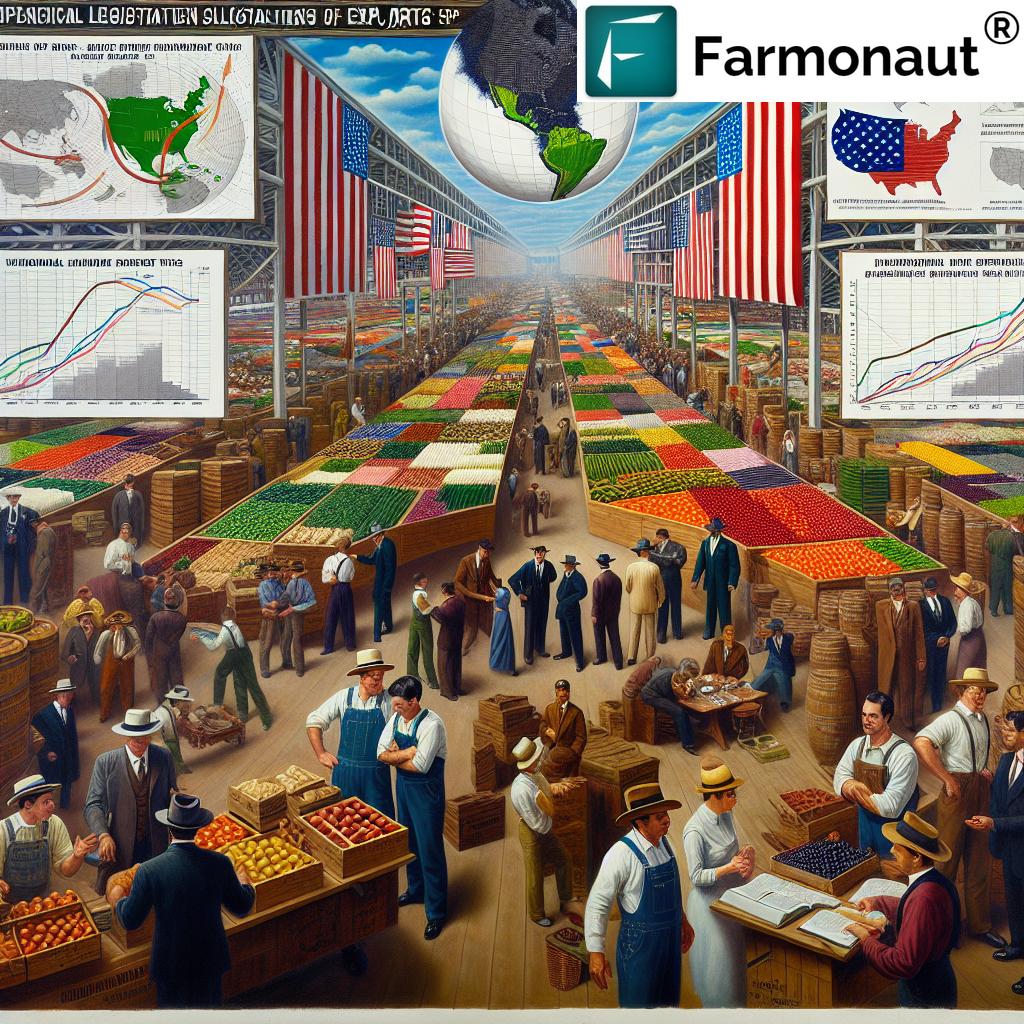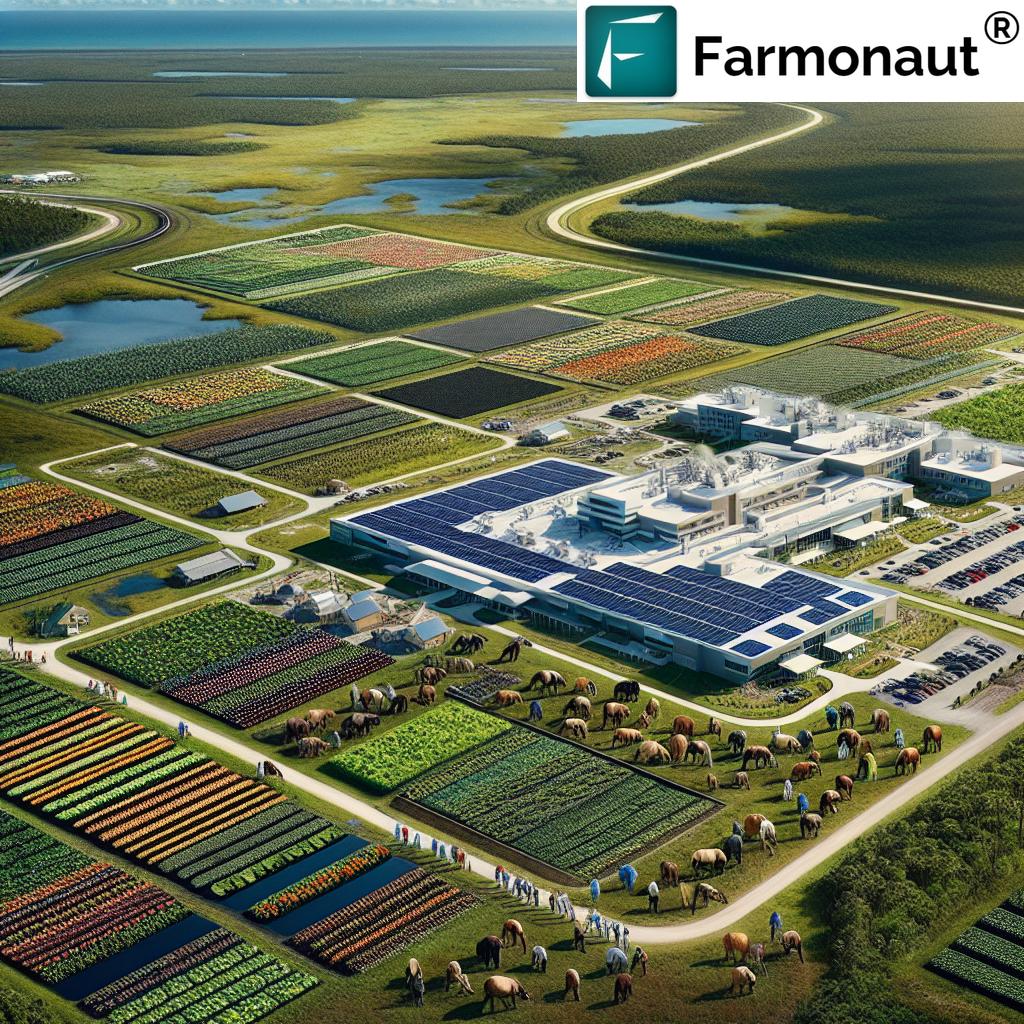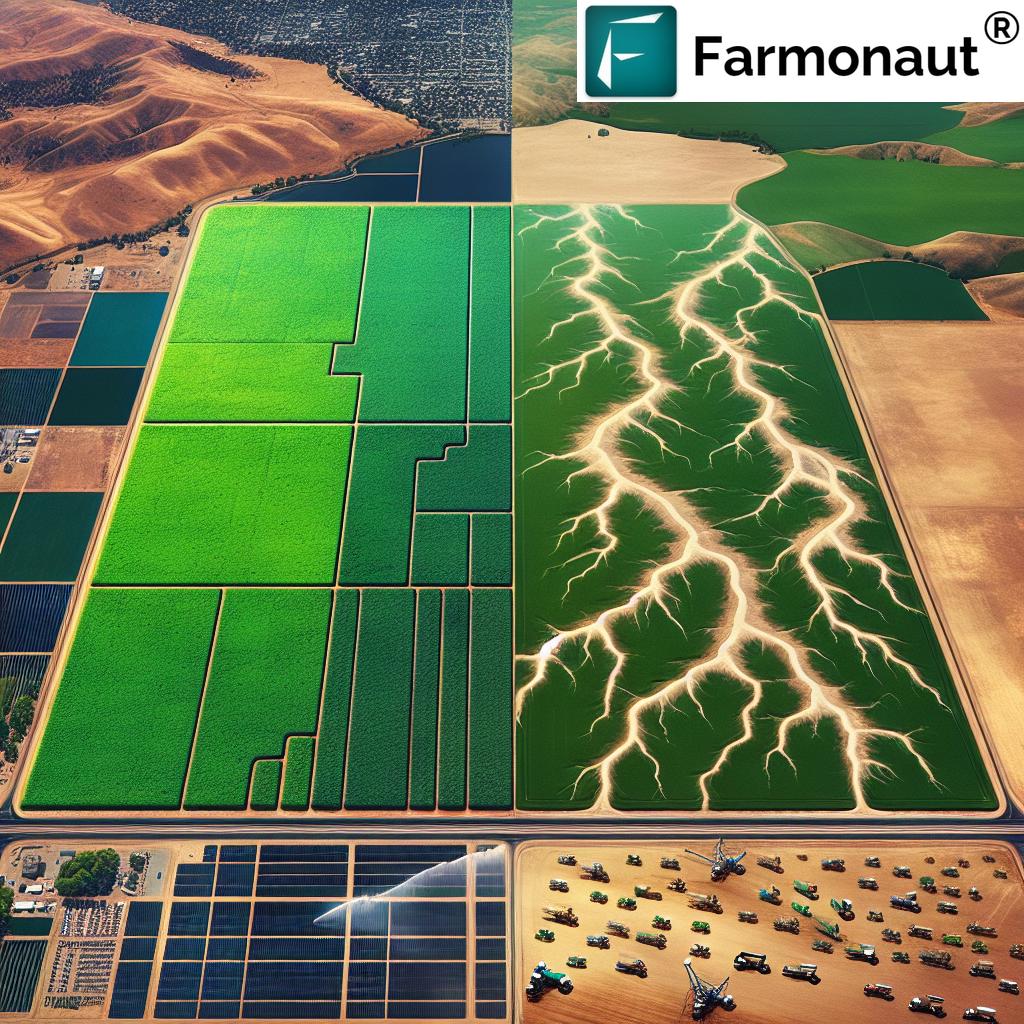Revolutionizing Agriculture: How Unmanned Aircraft Systems Are Transforming Crop Protection in Texas
“FAA approval processes for unmanned agricultural aircraft operations involve evaluating safety features across multiple rural airspaces.”
As we delve into the exciting world of agricultural innovation, we at Farmonaut are thrilled to explore the cutting-edge developments in unmanned aircraft systems (UAS) that are reshaping crop protection practices, particularly in the vast fields of Texas. The integration of aerospace engineering and precision agriculture technology is ushering in a new era of farming, one where efficiency, safety, and productivity soar to new heights.
The Rise of Unmanned Agricultural Helicopters
In recent years, we’ve witnessed a significant shift in the agricultural aviation landscape. Traditional crop dusting methods, while effective, have long been associated with risks to pilots and limitations in precision. Enter the game-changing solution: unmanned agricultural helicopters. These autonomous marvels are revolutionizing how we approach crop protection, offering a blend of safety, efficiency, and advanced technology that was once the stuff of science fiction.
Companies like Rotor Technologies, founded by aerospace engineer Hector Xu, are at the forefront of this agricultural revolution. Inspired by his own challenging experiences during night flights while training as a helicopter pilot, Xu recognized the potential for automation in agricultural aviation. This realization led to the birth of Rotor in 2021, a company dedicated to developing unmanned helicopters primarily for the agricultural sector.
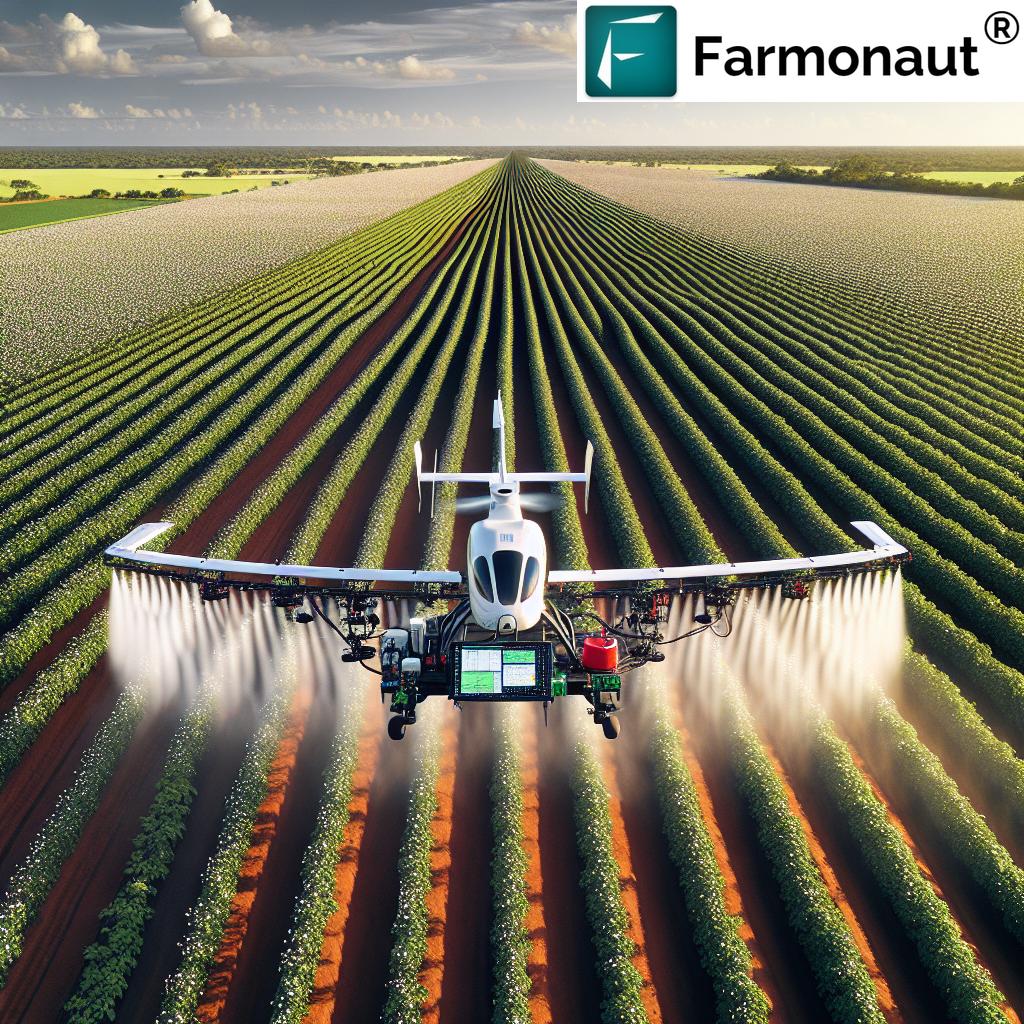
Autonomous Crop Spraying: A Leap Forward
The cornerstone of this agricultural innovation is autonomous crop spraying. Unlike smaller drones that have gained popularity in recent years, unmanned helicopters can cover larger areas more effectively, carrying heavier payloads and operating for extended periods. This capability addresses a crucial demand from farmers seeking innovative methods for crop dusting that can cover vast expanses of land efficiently.
Rotor’s flagship product, the Sprayhawk, exemplifies the potential of this technology. Essentially a modified Robinson R44 helicopter, the Sprayhawk is equipped with state-of-the-art flight computers, communication systems, sensors, and cameras. These enhancements provide superior terrain awareness and operational safety, allowing the aircraft to navigate complex agricultural landscapes with precision.
Agricultural Aviation Safety: A Top Priority
One of the most compelling arguments for adopting unmanned aircraft in agriculture is the significant improvement in safety. Traditional crop dusting is notoriously dangerous, with pilots operating at low altitudes and high speeds, often in challenging conditions. The risks are further compounded by obstacles such as power lines and the ever-present danger of pilot fatigue.
Tragically, dozens of fatalities occur each year in agricultural aviation, underscoring the urgent need for safer alternatives. Unmanned aircraft systems offer a solution by removing human pilots from the cockpit, particularly in the most hazardous situations. This shift not only protects human life but also allows for operations in conditions that would be too risky for manned flights.
Precision Agriculture Technology: Enhancing Efficiency and Effectiveness
The integration of precision agriculture technology with unmanned aircraft systems is a game-changer for crop protection. These advanced systems can deliver targeted applications of pesticides and fertilizers, reducing waste and minimizing environmental impact. By leveraging GPS and remote sensing technologies, farmers can ensure that every acre receives the exact treatment it needs, when it needs it.
This level of precision not only improves crop yields but also contributes to more sustainable farming practices. As we at Farmonaut understand the importance of sustainable agriculture, we’re excited to see how these technologies align with our mission to make precision agriculture affordable and accessible to farmers worldwide.
Drone vs Helicopter Crop Dusting: A Comparative Analysis
While drones have made significant inroads in agricultural applications, unmanned helicopters offer distinct advantages for large-scale crop protection. Let’s break down the key differences:
- Payload Capacity: Unmanned helicopters can carry substantially larger quantities of spray materials compared to drones, allowing for more extensive coverage in a single flight.
- Operational Range: With their greater fuel capacity and efficiency, helicopters can cover vast areas without the need for frequent refueling or battery changes.
- Stability in Varied Weather: Helicopters generally offer better stability in windy conditions, a crucial factor in ensuring precise application of crop protection products.
- Terrain Adaptability: The ability to hover and maneuver in tight spaces makes helicopters ideal for diverse terrains, from flat plains to hilly landscapes.
This comparison highlights why unmanned helicopters are poised to transform large-scale agricultural operations, particularly in regions like Texas with its expansive farmlands.
FAA Approval for Unmanned Aircraft: Navigating Regulatory Waters
As exciting as these technological advancements are, their implementation hinges on regulatory approval. The Federal Aviation Administration (FAA) plays a crucial role in ensuring the safe integration of unmanned aircraft into national airspace. For companies like Rotor Technologies, obtaining FAA approval is a critical step toward commercial operations.
The approval process involves rigorous testing and evaluation of safety features, communication systems, and operational protocols. Particular attention is paid to how these unmanned systems will interact with existing air traffic, especially in rural areas where agricultural operations are most common.
We anticipate that as more data becomes available demonstrating the safety and efficacy of these systems, the regulatory landscape will evolve to accommodate this transformative technology.
Agricultural Automation Solutions: Beyond Crop Spraying
While crop protection is a primary focus, the potential applications of unmanned aircraft in agriculture extend far beyond spraying. These versatile platforms are being developed to assist in various aspects of farm management:
- Crop Monitoring: Using advanced imaging technologies to assess crop health and detect issues early.
- Soil Analysis: Employing sensors to gather data on soil composition and moisture levels.
- Livestock Management: Monitoring herds and assessing pasture conditions in remote areas.
- Precision Planting: Utilizing GPS-guided systems for accurate seed placement.
These automation solutions promise to revolutionize farm management, making operations more efficient and data-driven. At Farmonaut, we’re particularly excited about how these technologies complement our satellite-based farm management solutions, offering farmers a comprehensive toolkit for optimizing their operations.
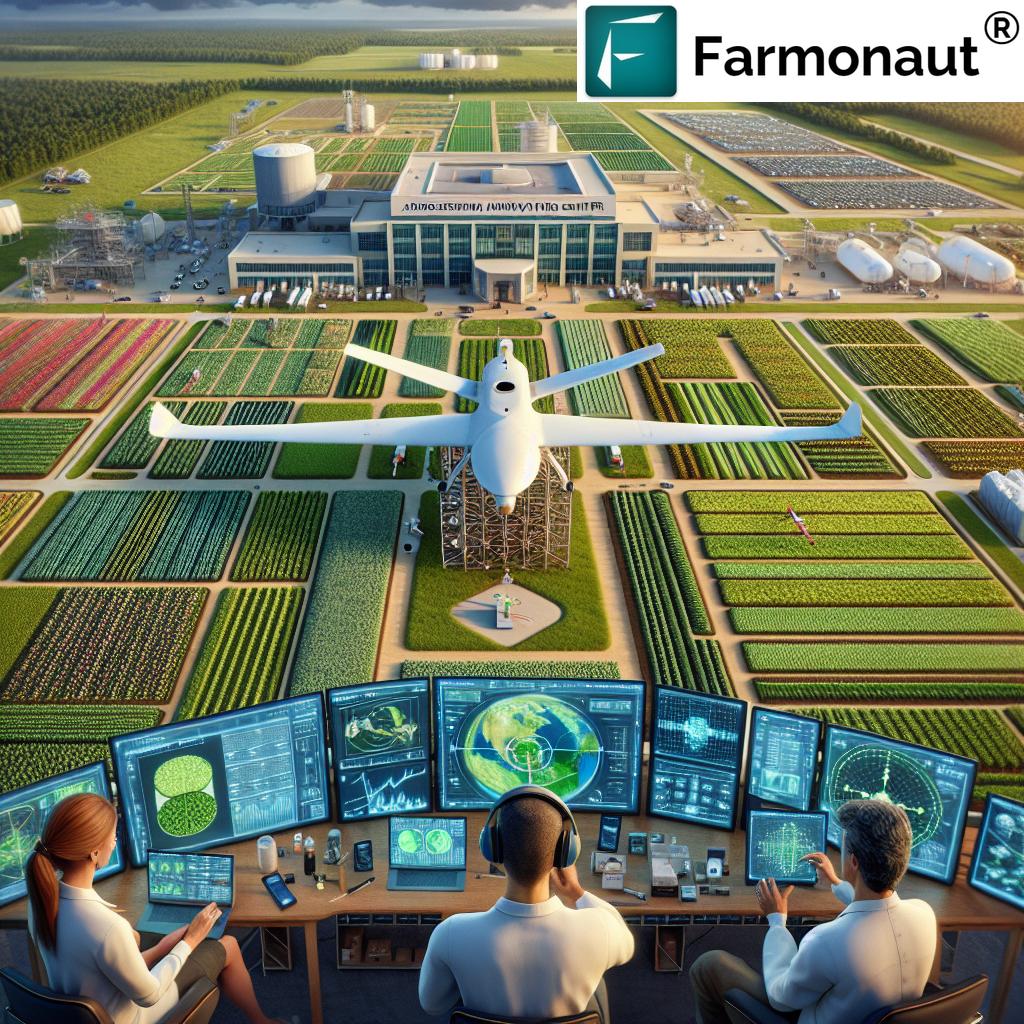
Remote Sensing in Agriculture: Enhancing Decision-Making
Remote sensing technologies are a crucial component of modern precision agriculture. Unmanned aircraft equipped with multispectral cameras and other sensors can provide farmers with invaluable data about their crops and land. This information enables more informed decision-making on various aspects of farm management:
- Crop health assessment
- Early pest and disease detection
- Irrigation planning
- Yield prediction
- Nutrient management
By integrating this aerial data with ground-based sensors and satellite imagery, farmers can build a comprehensive picture of their farm’s health and productivity. This holistic approach to data collection and analysis is at the heart of precision agriculture, allowing for targeted interventions that maximize yields while minimizing resource use.
“Unmanned agricultural helicopters are being integrated into crop protection systems from Texas to Massachusetts, spanning diverse terrains.”
Aerial Crop Protection Systems: A New Paradigm
The development of aerial crop protection systems using unmanned aircraft represents a paradigm shift in agricultural practices. These systems offer several key advantages:
- Precision Application: Advanced GPS and imaging systems allow for highly targeted application of crop protection products, reducing waste and environmental impact.
- Rapid Response: Unmanned aircraft can be deployed quickly to address emerging pest or disease issues before they spread.
- Reduced Soil Compaction: By eliminating the need for heavy ground-based equipment, these systems help preserve soil health.
- Improved Worker Safety: Minimizing human exposure to potentially harmful chemicals during application.
As these systems continue to evolve, we expect to see even greater integration with other precision agriculture technologies, creating a seamless ecosystem of farm management tools.
Agritech Innovations: Driving the Future of Farming
The rise of unmanned aircraft in agriculture is just one aspect of the broader agritech revolution. We’re seeing innovations across the entire farming spectrum, from soil sensors and smart irrigation systems to AI-powered crop management platforms. At Farmonaut, we’re proud to be part of this innovation ecosystem, offering farmers cutting-edge satellite-based farm management solutions.
Some of the most exciting agritech innovations complementing unmanned aircraft systems include:
- Blockchain-based traceability for enhanced supply chain transparency
- AI-driven crop yield prediction models
- IoT devices for real-time farm monitoring
- Robotics for automated harvesting and sorting
These technologies, when integrated effectively, have the potential to dramatically increase agricultural productivity while promoting sustainability and resilience in the face of climate change.
The Texas Frontier: Leading the Charge in Agricultural Aviation
Texas, with its vast agricultural lands and forward-thinking approach to technology adoption, is emerging as a key player in the unmanned agricultural aircraft revolution. The state’s diverse terrain and crop varieties provide an ideal testing ground for these innovative systems. From the cotton fields of the High Plains to the rice paddies of the Gulf Coast, Texas farmers are embracing these new technologies to enhance their operations.
Recent demonstrations, like the public flight test of Rotor’s Sprayhawk at an agricultural aviation trade show in Texas, highlight the state’s role in pioneering these advancements. Such events not only showcase the capabilities of unmanned systems but also foster important discussions about their integration into existing agricultural practices.
Challenges and Opportunities in Airspace Integration
While the potential benefits of unmanned aircraft in agriculture are clear, their integration into existing airspaces presents both challenges and opportunities. Key considerations include:
- Air Traffic Management: Developing systems to safely coordinate unmanned and manned aircraft operations, especially in rural areas.
- Communication Protocols: Establishing robust communication channels between unmanned aircraft, ground control, and other airspace users.
- Emergency Procedures: Implementing fail-safe mechanisms and protocols for various contingencies.
- Pilot Training: Developing new training programs for remote pilots and operators of unmanned agricultural aircraft.
Addressing these challenges will require collaboration between technology developers, regulatory bodies, and the agricultural community. The successful integration of these systems has the potential to create new job opportunities and skill sets within the agricultural sector.
The Role of Aerospace Engineering in Shaping Agricultural Future
The convergence of aerospace engineering and agriculture is a testament to the interdisciplinary nature of modern innovation. Companies like Rotor Technologies, founded by aerospace engineers, are bringing cutting-edge aviation technology to the fields. This cross-pollination of ideas and expertise is driving rapid advancements in agricultural aviation.
Key contributions from aerospace engineering include:
- Advanced flight control systems for precise maneuvering
- Lightweight, durable materials for aircraft construction
- Sophisticated navigation and obstacle avoidance technologies
- Aerodynamic designs optimized for low-altitude agricultural operations
As these technologies continue to evolve, we can expect to see even more innovative solutions emerging from this unique intersection of disciplines.
Market Potential and Economic Impact
The market potential for unmanned agricultural aircraft is substantial and growing. Industry experts project significant cost savings and efficiency gains for farmers adopting these technologies. Factors driving market growth include:
- Increasing labor costs and shortages in traditional agricultural work
- Growing demand for precision agriculture solutions
- Pressure to improve sustainability and reduce environmental impact
- Need for more efficient crop protection methods in the face of climate change
As the technology matures and regulatory frameworks evolve, we anticipate a rapid expansion of the unmanned agricultural aircraft market, with potential ripple effects throughout the agricultural supply chain.
Comparative Analysis: Unmanned Aircraft Systems for Crop Protection
| Aircraft Type | Payload Capacity (gal) | Coverage Area (acres/hr) | Key Features | Suitable Crops/Terrains | Regulatory Considerations |
|---|---|---|---|---|---|
| Autonomous Helicopters | 50-100 | 200-400 | High precision spraying, obstacle avoidance, extended flight time | Large-scale row crops, orchards, varied terrain | FAA approval required, airspace integration protocols |
| Fixed-Wing Drones | 2-5 | 30-60 | Rapid deployment, efficient for smaller areas | Small to medium farms, flat terrain | Less stringent regulations, altitude restrictions |
| Multi-Rotor Drones | 1-3 | 10-20 | Highly maneuverable, precise spot treatments | Specialty crops, greenhouses, small plots | Visual line-of-sight operations, weight limits |
| VTOL Fixed-Wing | 10-20 | 100-150 | Combines benefits of fixed-wing and multi-rotor | Medium to large farms, mixed terrain | Emerging category, case-by-case approvals |
The Future of Agricultural Automation
As we look to the future, the potential for agricultural automation solutions is vast. Unmanned aircraft systems are just one piece of a larger puzzle that includes:
- Autonomous ground vehicles for planting and harvesting
- AI-driven crop management systems
- Advanced weather prediction models for optimized farm planning
- Integrated farm management platforms that combine data from multiple sources
At Farmonaut, we’re excited to be part of this evolving landscape, offering farmers cutting-edge tools to enhance their operations. Our satellite-based farm management solutions complement these emerging technologies, providing a comprehensive approach to precision agriculture.
For those interested in exploring how our technology can benefit your farming operations, we invite you to check out our web app, Android app, or iOS app. For developers looking to integrate our satellite and weather data into their own systems, our API and API Developer Docs are available.
Conclusion: A New Era in Crop Protection
The integration of unmanned aircraft systems into agricultural practices, particularly in crop protection, marks the beginning of a new era in farming. From the vast fields of Texas to the diverse agricultural landscapes across the United States, these technologies are poised to revolutionize how we approach food production.
As we continue to face challenges such as climate change, population growth, and resource scarcity, innovations in agricultural technology will play a crucial role in ensuring food security and sustainability. The development and adoption of unmanned agricultural aircraft represent a significant step forward in this ongoing journey of agricultural innovation.
At Farmonaut, we’re committed to supporting farmers and agricultural professionals in navigating this exciting new landscape. By providing cutting-edge satellite-based farm management solutions, we aim to complement and enhance the capabilities of unmanned aircraft systems, contributing to a more efficient, productive, and sustainable agricultural future.
FAQs
- Q: How do unmanned agricultural helicopters compare to traditional crop dusting methods?
A: Unmanned agricultural helicopters offer increased safety by removing pilots from dangerous low-altitude flights, provide more precise application of crop protection products, and can operate for longer periods without fatigue concerns. - Q: What are the main regulatory challenges for implementing unmanned aircraft in agriculture?
A: Key challenges include obtaining FAA approval for operations, integrating unmanned aircraft into existing airspaces, and developing safety protocols for coordination with manned aircraft. - Q: How does precision agriculture technology enhance crop protection?
A: Precision agriculture technology allows for targeted application of pesticides and fertilizers, reducing waste and environmental impact while improving crop yields through data-driven decision-making. - Q: What role does remote sensing play in unmanned agricultural aircraft systems?
A: Remote sensing technologies provide valuable data on crop health, soil conditions, and pest infestations, enabling farmers to make informed decisions about crop management and protection strategies. - Q: How are aerospace engineering principles being applied to agricultural aviation?
A: Aerospace engineering contributes advanced flight control systems, lightweight materials, sophisticated navigation technologies, and aerodynamic designs optimized for agricultural operations.







